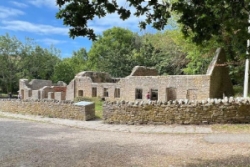

Explore our heritage research
Innovative and interdisciplinary approaches to documenting, preserving and presenting heritage for the future
The Heritage Hub brings together researchers and professionals from across the university to tackle key issues in heritage and heritage conservation locally, nationally and internationally.
We encourage traditional, creative and innovative methods and tools to protect and preserve tangible and intangible heritage.
With communities at the heart of our research and innovation activities, the hub promotes cross- and interdisciplinary approaches to preserving both tangible and intangible heritage for communities, policy-makers and organisations.
The Heritage Hub aims to:
- provide a focus for university engagement with heritage partners locally, nationally and internationally
- encourage and support successful and inclusive heritage research and community engagement within the university and with local communities
- develop and implement an interdisciplinary dialogue and agenda for heritage research, community engagement and professional practices and for resilient and sustainable development of our places and communities
Our research themes
Our interdisciplinary approaches are represented in six heritage-based areas:
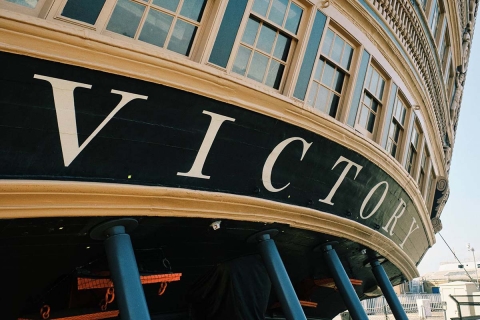
Oral histories, communities and identity
Oral histories allow us to better understand the thoughts, feelings and motivations of ordinary people in a way that ‘official’ historical documents cannot. We can:
- advise on ‘best practice’ in the development of oral history projects
- deliver oral history training for groups or businesses
- organise and capture oral histories for specific projects
- advise on ethics, cataloguing and data storage of recorded interviews
- provide a platform to showcase projects and outcomes
- advise on online or hard copy publications and exhibitions of projects
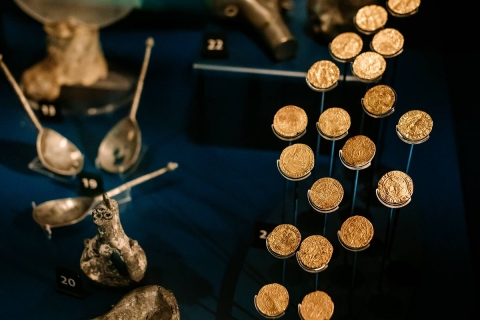
Conservation science
This theme focuses on landscape change and preserving our ecological heritage. We have ongoing collaborations with Fishbourne Roman Palace and Cumberland House Natural History Museum.
At Fishbourne we aim to build an understanding of how landscapes and land use have evolved over the past 2,000 years, and how people relate to landscapes and perceive these changes.
With Cumberland House Natural History Museum, we are digitising and cataloguing botanical specimens within the Portsmouth Museums herbarium collection (PMH), to make them available to the wider research community, citizen scientists and amateur naturalists.
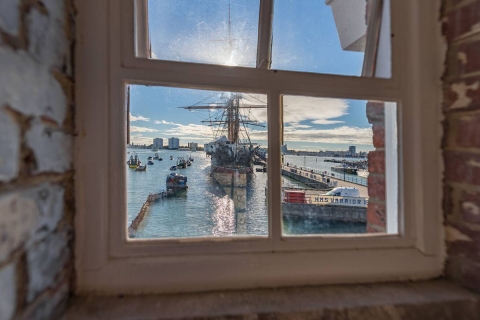
Valuing heritage
In today’s evolving world, celebrating the past, promoting and valuing heritage engenders people’s engagement with heritage, and heritage can contribute to both social, business and economic development and growth.
The aspirations of this theme relate to the conservation and preservation of heritage assets and culture.
They accord to circular economy, sustainability and low carbon optimisation for the productivity of culture and heritage assets and in capturing the value of these along with the economics of their uniqueness.
Central to this is a focus on wellbeing, inclusive growth and accessibility.
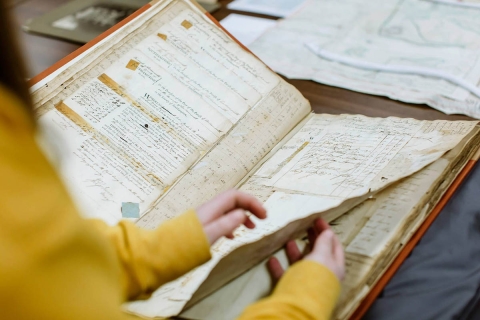
Community heritage
The main focus of this theme is community outreach to help share and connect our heritage research with a wider audience.
This work includes efforts around identifying, collecting and preserving heritage collections which may comprise objects, archival material and oral histories.
We also aim to identify appropriate funding opportunities and enable the creation of strong funding bids in partnership with community and heritage organisations. Our aspirations are to build and strengthen relationships with stakeholders in Portsmouth and beyond, as well as to support and develop local heritage capacity.

Connected heritage
Digital heritage is an emerging multidisciplinary field that combines the expertise of heritage management, museum studies, history, archaeology, conservation, preservation and current digital and emerging technologies.
Digital heritage conducts research on the impact and application of digital technologies in a cultural heritage context.
It seeks to create novel approaches and opportunities for understanding and experiencing the past, ensuring that cultural heritage remains relevant and accessible in the digital age.
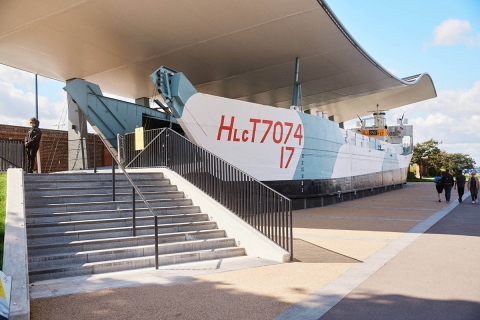
Local built and maritime heritage
Portsmouth’s local built heritage derives from maritime heritage and shapes people’s heritage.
As a hub of naval architecture and maritime culture within Britain’s invasion coast, the city connected global naval bases and dockyards whose communities blended and returned, like Bermuda’s 1950 dockyard apprentices.
This theme focuses on the community’s intimate engagement with and vision of its built heritage through the Portsea Heritage Project, Growing Portsea and Treadgold’s stories, building resilience and intergenerational connections.
Research projects
-
Co-Visualisation of the invisible past using the present values and debates
This project is part of a bigger collaboration between the university and the Fishbourne Roman Palace Museum that aims to reframe the current interpretation of the palace through the co-creation of digital interpretations that engage younger generations in exploring the ruins.
-
Regenerating Cities during Crisis: Culturally-Routed and sustainable strategies for Middle Eastern Cities
The network aims to offer networking and educational activities concerning urban regeneration, a crucial working and research issue in Middle Eastern cities particularly after Syrian crisis which affected the Syrian cities as well as the cities in neighbouring countries (for example Jordan).
-
Establishing and Connecting the Communities of Tyneham Village
This fund is meant to support the researchers to collaborate with MOD in exploring and connecting different communities related to Tyneham Village and bringing them together to explore the potential of the site and possible large-scale, collaborative research and educational projects that could be launched as part of telling the site stories and heritage narratives in an inclusive way.
-
Enabling XR Enterprise
This project enables the piloting of crucial XR support for Portsmouth Tourism, lowering the barrier of entry to XR technology. eXRe will maximise benefits of an innovative world-class local facility to directly meet Portsmouth’s challenges and strategic priorities, present and future.
-
“Unpath'd Waters”: Marine and Maritime Collections in the UK
Integrate the UK's marine and maritime heritage collections; establish meaningful links between wreck sites, artefacts; transform our ability to search those collections; use Al and machine learning to create innovative ways of searching these collections to generate entirely new ways of understanding this heritage.
-
Towards a Smart Village Framework: Critical Heritage and Community Heritage Narratives to Unravelling, Co-Creating and Re-Creating Rural Heritage
The project provides an essential research step that informs future work on smart village frameworks for resilient and sustainable development and community wellbeing. The work will be developed in collaboration with Fishbourne and Weald and Downland Museums and local communities from their related villages (Fishbourne and Singleton).
Publication highlights
-
The Role of Architectural Heritage in offering a more resilient lockdown in Egypt
Teba, T., ElZoghby, N., Gharib, N. (2021) "The Role of Architectural Heritage in offering a more resilient lockdown in Egypt", Health & Environmental Resilience and Livability in Cities (HERL)
-
Destruction, heritage and memory: post-conflict memorialisation for recovery and reconciliation
Ece Atabay, Z., Macedonio, A., Teba, T., Gül Ünal, Z. (2022) "Destruction, heritage and memory: post-conflict memorialisation for recovery and reconciliation", Journal of Cultural Heritage Management and Sustainable Development
-
Online User Research Literature Review: UK Gallery, Library, Archive and Museum (GLAM) Digital Collection
Bailey-Ross, C.S. (2021) "Online User Research Literature Review: UK Gallery, Library, Archive and Museum (GLAM) Digital Collection", Zenodo
-
The impact of digital resources
Warwick, C., Bailey-Ross, C.S. (2020) "The impact of digital resources", Digital Technology and the Practices of Humanities Research
-
It's a gift - Samuel Pepys and Sir William Warren, an autoethnographic account of gifts, bribes and kickbacks
McBride, K. (2022) "It's a gift - Samuel Pepys and Sir William Warren, an autoethnographic account of gifts, bribes and kickbacks", European Accounting Association EAA Annual Congress
-
The Picturesque Roots of Impression Management: Framing, Claude Glass and ‘Rose’ Tinted Lens?
McBride, K., Atkins, J. (2023) "The Picturesque Roots of Impression Management: Framing, Claude Glass and ‘Rose’ Tinted Lens?", 2023 International Accounting and Auditing Conference: Accounting for Planet, People and Profit - Johannesburg, South Africa
-
'As bad as bad can be’: accounting for species extinction in the North Pacific
McBride, K., Sagitova, R., Cam, O. (2023) "'As bad as bad can be’: accounting for species extinction in the North Pacific", Accounting, Auditing and Accountability Journal
Funding landscape and development
The Heritage Hub is built on a cross-disciplinary professional approach that provides a focus for historical, archaeological and community based research for the south of Hampshire and beyond.
With academic partners, authorities, stakeholders and local communities, we commit to explore and develop diverse streams of funding that contribute to local, national and international heritage matters.
We are open to exploring community led (e.g. Heritage Lottery Fund, Historic England), government (e.g. UK Shared Prosperity Fund) as well as academic (e.g. UKRI and Horizon Europe) funding streams.
Events
Each year in September, the Heritage Hub hosts Heritage Week. This series of events is an opportunity for academics and the public to discover the latest in heritage research at the university and how our expertise can benefit the wider community in Portsmouth and beyond.
Latest news
View all news
Launch of exciting new heritage film at St Hubert’s

It’s all in the detail - Portsmouth pioneers city-wide heritage science initiative

New project to measure the value of digital culture and heritage to society

Free public events focusing on the region’s local heritage

University to host major international architectural heritage conference
Latest blogs and podcasts
View all blogs and podcasts
Portland Stone and Pork Pies: GIs, Trade Marks and Heritage

COVID19: Heritage in times of crisis: a perspective on conflicts and their impact on cultural heritage and values
Opportunities to study heritage and heritage conservation
PhD
Discover why you should do your PhD at the University of Portsmouth – and explore the subject areas you can study in, how to fund your PhD, and how to apply.

Our members
Heritage Hub chairs
Dr Tarek Teba
Related research areas and areas of expertise
Digital and Creative Technologies research
We're fuelling technological advances in animation, visual effects (VFX), cross reality (XR), user experience (UX), computer and video games, and visual computing. Discover the work we do.

History
We're understanding our society through the study of experiences, culture, values and activities of people throughout history.

Experience design
We're investigating the impact and application of experience design and digital technology in the cultural and heritage sectors to improve visitor experiences and conserve cultural and historical sites.


